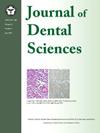Comparison of aesthetic outcomes of maxilla-only, mandible-only, and bimaxillary orthognathic surgeries: A retrospective analysis
IF 3.4
3区 医学
Q1 DENTISTRY, ORAL SURGERY & MEDICINE
引用次数: 0
Abstract
Background/purpose
Orthognathic surgery addresses craniofacial and occlusal deformities caused by skeletal discrepancies. This study compares the aesthetic outcomes of maxilla-only, mandible-only, and bimaxillary surgeries, focusing on facial angles, proportions, and soft tissue aesthetics. It also identifies parameters most influencing postoperative aesthetics.
Materials and methods
Sixty Taiwanese patients (30 males, 30 females) were divided into three groups: maxilla-only, mandible-only, and bimaxillary surgeries (20 patients per group). Pre- and postoperative cephalograms were analyzed using six cephalometric methods. Paired and independent t-tests (P < 0.05) were conducted to evaluate changes and deviations from reference norms.
Results
The results of the study showed that maxilla-only surgery could lead to significant improvements in midface aesthetics, especially a notable increase in the nasolabial angle (P < 0.05) and a reduction in UL-E line distances (P < 0.05). The mandible-only surgery could enhance the lower facial symmetry with significant changes observed in the H angle (P < 0.05), SN-MP angle (P < 0.05), and LL-E line distances (P < 0.05). Bimaxillary surgery resulted in the most comprehensive improvements, including a significant increase in the lower anterior facial height (LAFH, P < 0.05), an enhanced nasolabial angle (P < 0.05), and an overall improvement in facial balance. However, a decrease in postoperative nasal prominence was observed across all surgical types when compared to reference norms, suggesting that secondary adjustments may be required.
Conclusion
Maxilla-only surgery improves midface proportions, while mandible-only surgery enhances lower facial balance. Bimaxillary surgery provides the most comprehensive outcomes. Individualized surgical planning and potential nasal refinements are crucial for optimal results.
单上颌、单下颌骨和双上颌正颌手术的美学效果比较:回顾性分析
背景/目的正颌外科治疗由骨骼差异引起的颅面和咬合畸形。本研究比较了仅上颌、仅下颌骨和双上颌手术的美学结果,重点是面部角度、比例和软组织美学。它还确定了最影响术后美学的参数。材料与方法台湾患者60例(男30例,女30例),分为单上颌、单下颌骨和双上颌3组(每组20例)。采用六种头测方法对术前和术后的头颅图像进行分析。配对和独立t检验(P <;0.05),评价与参考规范的变化和偏差。结果单纯上颌骨手术可显著改善中脸美观,尤其是鼻唇角明显增加(P <;0.05)和UL-E线距离的减少(P <;0.05)。仅下颌骨手术可增强下面部对称性,H角有明显变化(P <;0.05), SN-MP角(P <;0.05), l - e线距(P <;0.05)。双颌手术带来了最全面的改善,包括显著增加下前面部高度(LAFH, P <;0.05),鼻唇角增强(P <;0.05),面部平衡整体改善。然而,与参考规范相比,所有手术类型的术后鼻突都有所下降,这表明可能需要进行二次调整。结论单上颌骨手术可改善中面部比例,单下颌骨手术可改善下面部平衡。双颌手术提供了最全面的结果。个性化的手术计划和潜在的鼻部改良是获得最佳结果的关键。
本文章由计算机程序翻译,如有差异,请以英文原文为准。
求助全文
约1分钟内获得全文
求助全文
来源期刊

Journal of Dental Sciences
医学-牙科与口腔外科
CiteScore
5.10
自引率
14.30%
发文量
348
审稿时长
6 days
期刊介绍:
he Journal of Dental Sciences (JDS), published quarterly, is the official and open access publication of the Association for Dental Sciences of the Republic of China (ADS-ROC). The precedent journal of the JDS is the Chinese Dental Journal (CDJ) which had already been covered by MEDLINE in 1988. As the CDJ continued to prove its importance in the region, the ADS-ROC decided to move to the international community by publishing an English journal. Hence, the birth of the JDS in 2006. The JDS is indexed in the SCI Expanded since 2008. It is also indexed in Scopus, and EMCare, ScienceDirect, SIIC Data Bases.
The topics covered by the JDS include all fields of basic and clinical dentistry. Some manuscripts focusing on the study of certain endemic diseases such as dental caries and periodontal diseases in particular regions of any country as well as oral pre-cancers, oral cancers, and oral submucous fibrosis related to betel nut chewing habit are also considered for publication. Besides, the JDS also publishes articles about the efficacy of a new treatment modality on oral verrucous hyperplasia or early oral squamous cell carcinoma.
 求助内容:
求助内容: 应助结果提醒方式:
应助结果提醒方式:


